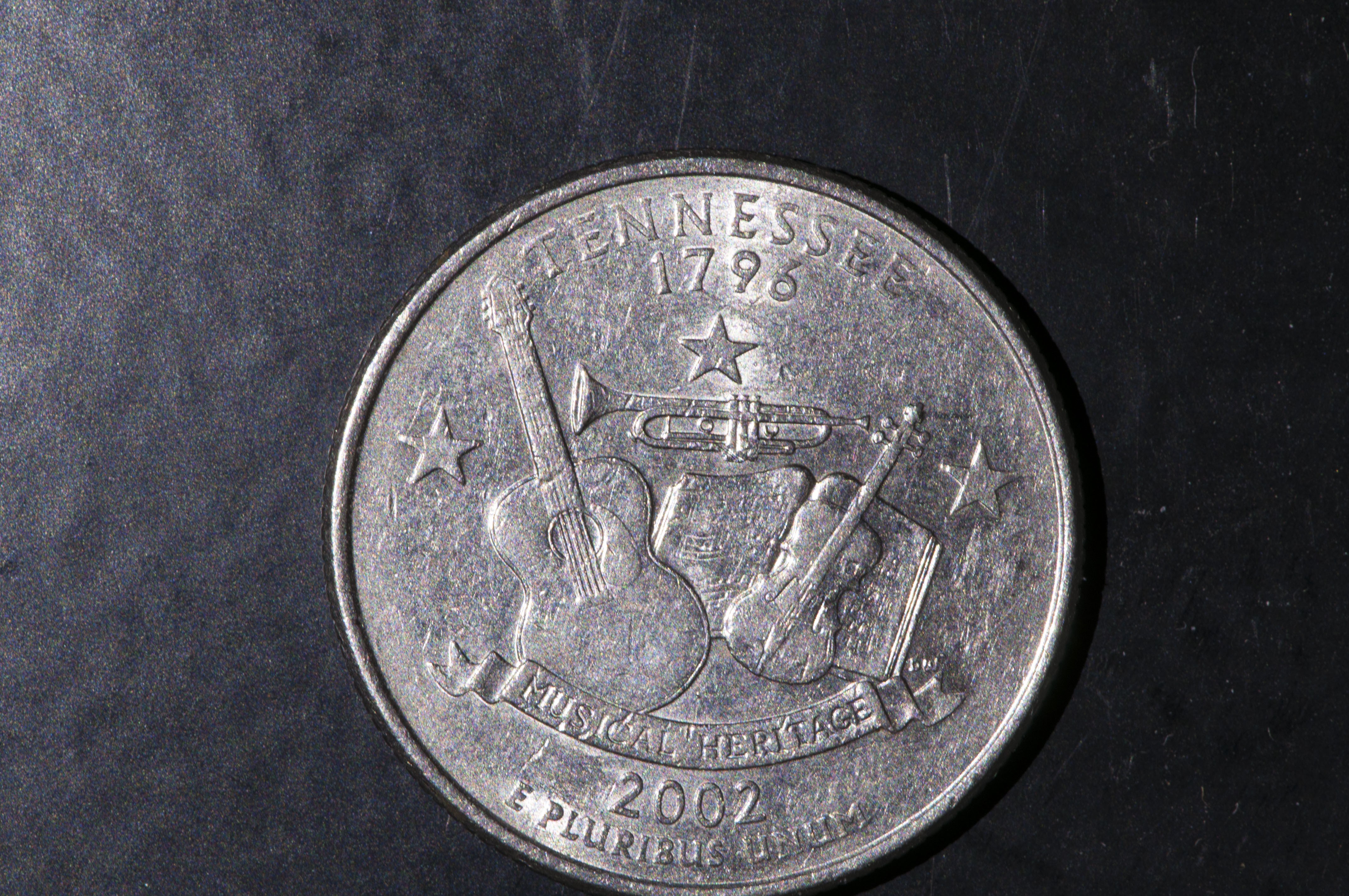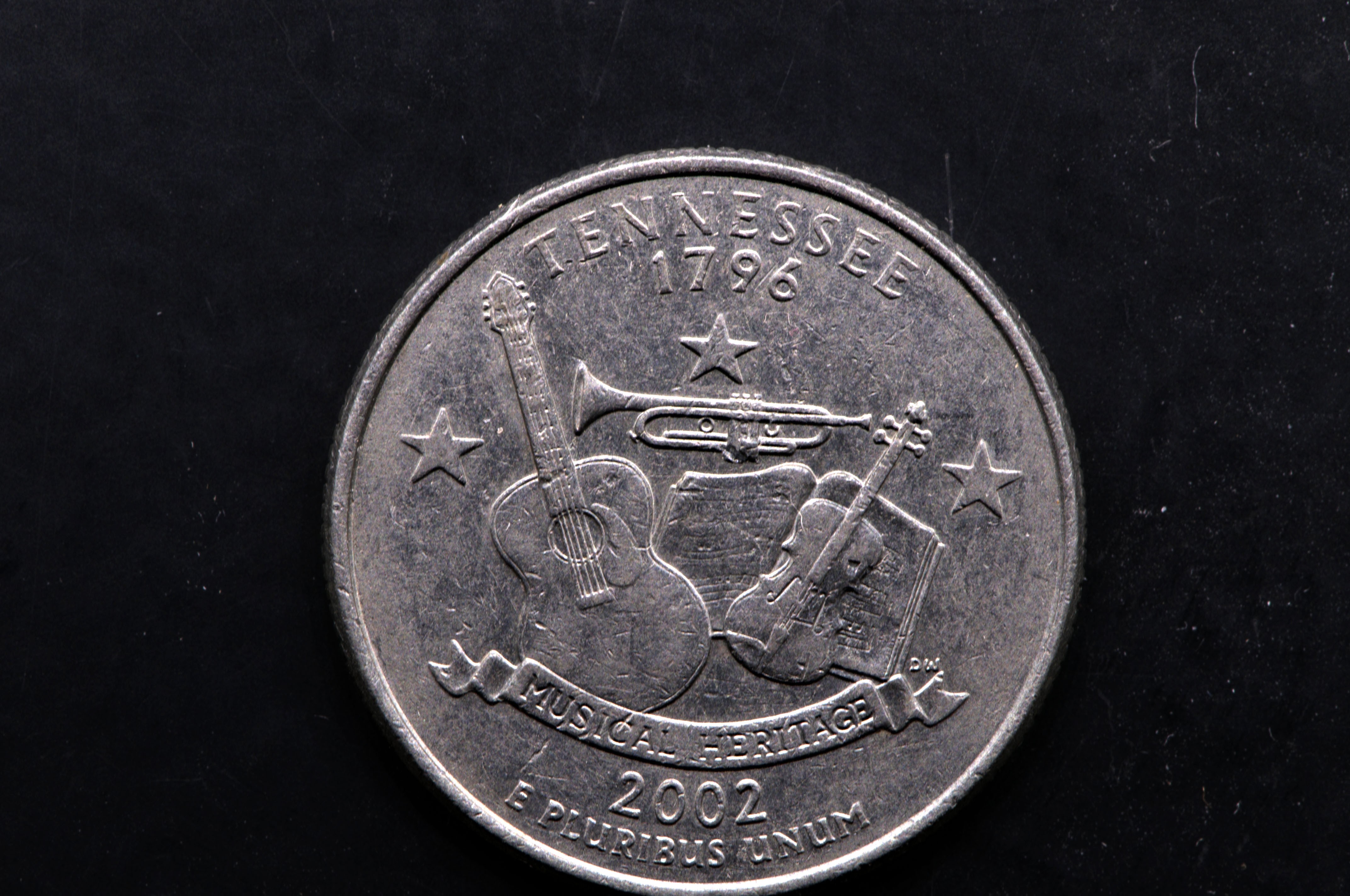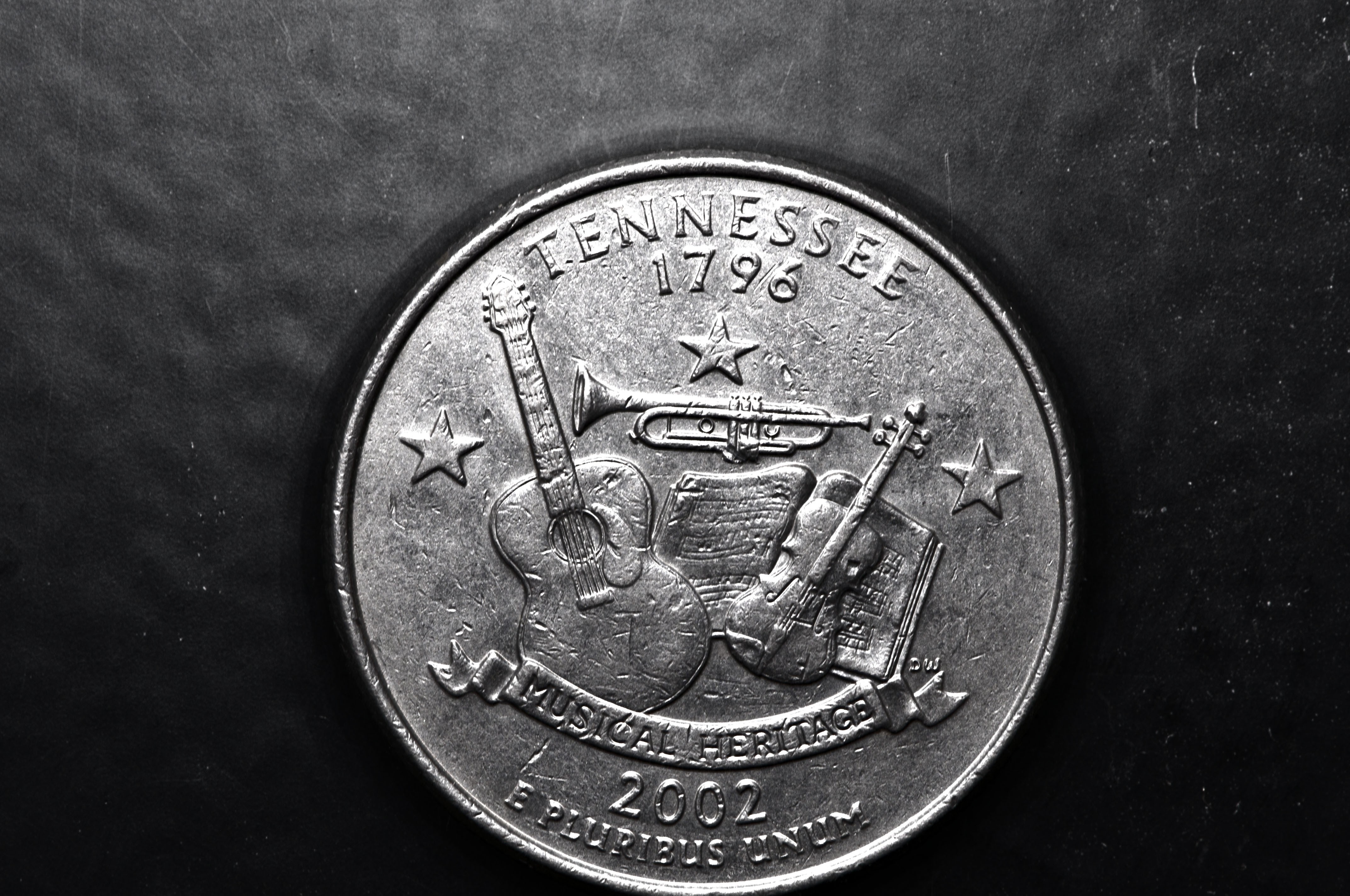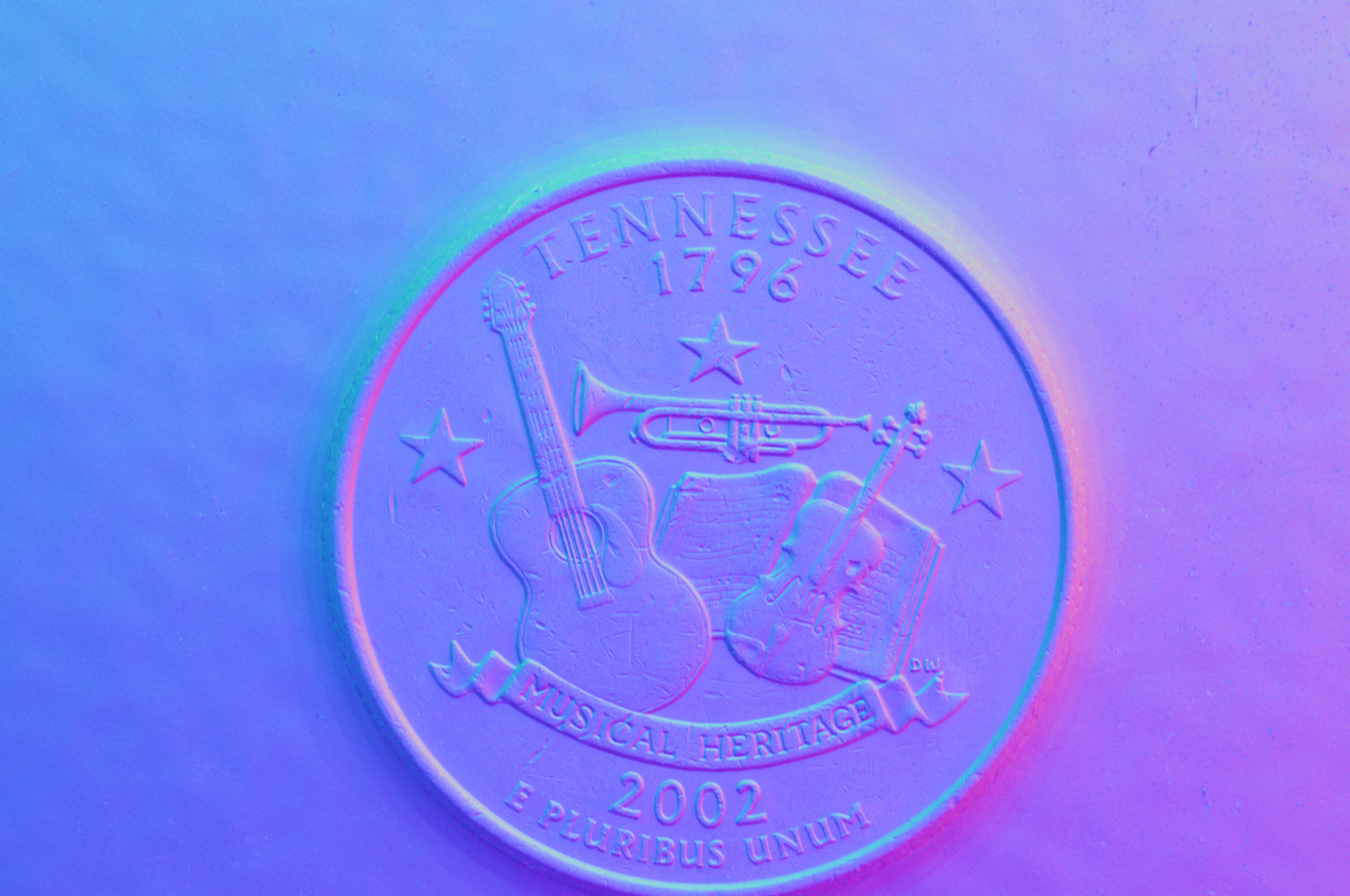In astronomy, "first light" is the expression for when a telescope is first turned to the stars. I'm going to steal that expression for the first reflectance transformation imaging data acquisition with the system I'm building for the Hackaday Prize. Here's a video of it in action; the variability in focus is due to the camera I was shooting the video with, since the light level was very low.
48 photographs were taken of the reverse of a Tennessee US quarter (just the first thing I had at hand). Photos were taken with a Nikon D90 DSLR, using the IR remote capability of the system to automatically fire the camera shutter in sync with the 48 LED lights at different angles inside the dome. Here's a montage of all 48 photos taken at different lighting angles; click on any photo for a larger view:
 The first photo in the sequence is at a lighting angle of about 65 degrees:
The first photo in the sequence is at a lighting angle of about 65 degrees:
 Process all the photos into an RTI dataset, and you can light the coin at an arbitrary oblique angle to bring out more detail, as well as suppressing shiny highlights that obscure details:
Process all the photos into an RTI dataset, and you can light the coin at an arbitrary oblique angle to bring out more detail, as well as suppressing shiny highlights that obscure details:
 Now use the specular enhancement mode, which imparts a shiny character to the surface, and the details really pop:
Now use the specular enhancement mode, which imparts a shiny character to the surface, and the details really pop:
 Using the normals enhancement mode, which color-codes the picture based on the perpendicular direction to the surface at all points, brings out a different view:
Using the normals enhancement mode, which color-codes the picture based on the perpendicular direction to the surface at all points, brings out a different view:
 These images don't really do the technique justice, since they are all static captures of a dynamic viewing process; changing the virtual lighting angle dynamically can bring out different details at different lighting angles.
These images don't really do the technique justice, since they are all static captures of a dynamic viewing process; changing the virtual lighting angle dynamically can bring out different details at different lighting angles.
Discussions
Become a Hackaday.io Member
Create an account to leave a comment. Already have an account? Log In.